Rajasthan, the land of kings and queens, is a state located in the northern part of India. Known for its rich culture, history, and architecture, Rajasthan is home to several UNESCO World Heritage Sites. These sites are not only popular tourist destinations but also hold immense cultural and historical significance. From forts and palaces to temples and monuments, Rajasthan has it all. In this article, we will take a look at some of the most famous UNESCO World Heritage Sites in Rajasthan, Delhi and Agra.
UNESCO World Heritage Sites in Rajasthan
Jantar Mantar
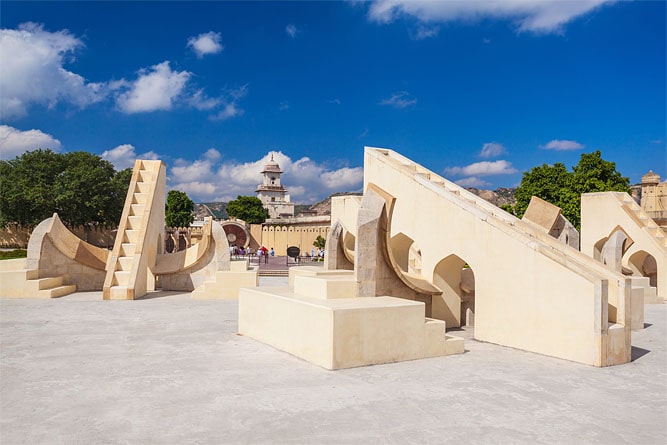
Jantar Mantar is a UNESCO World Heritage Site located in Jaipur, Rajasthan. This astronomical observatory was built in the 18th century by Maharaja Sawai Jai Singh II, who was an ardent lover of mathematics and astronomy. The observatory consists of various astronomical instruments, including sundials, sextants, and quadrants. The most famous instrument is the Samrat Yantra, which is a giant sundial that can tell the time accurate to 2 seconds. Jantar Mantar is a unique example of the scientific advancements of the 18th century and is a must-see for anyone interested in astronomy or history.
The observatory was built to study the movements of the celestial bodies and to create accurate astronomical tables. The instruments were not just used for astronomical observations but also for timekeeping and determining the latitude and longitude of a place. The observatory was built in such a way that it could be used even during the day and in any weather conditions.
The Jantar Mantar observatory is an outstanding example of the architectural and scientific creativity of the 18th century. It is a testament to the astronomical skills and technology of ancient India and the remarkable achievements of Maharaja Sawai Jai Singh II.
Amber Fort
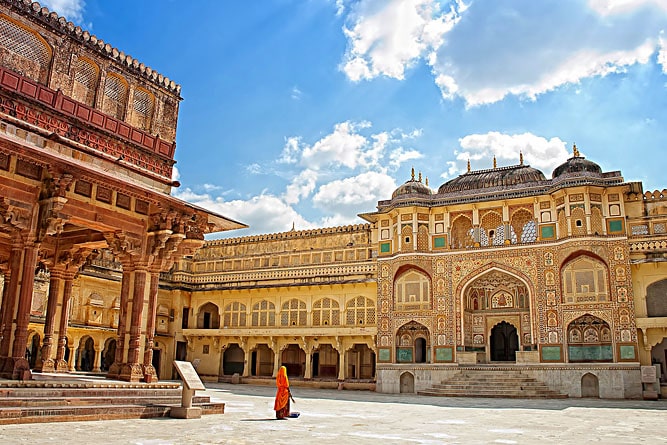
Amber Fort is located in Amber near Jaipur, and is one of the most popular tourist destinations in Rajasthan. The fort was built in the 16th century by Raja Man Singh and is a perfect example of Rajput architecture. The fort is made of red sandstone and white marble and is adorned with intricate carvings and paintings. Visitors can take an elephant ride to the fort, which is a unique experience in itself. Inside the fort, you can find several palaces, temples, and gardens that are worth exploring.
The fort is a perfect blend of Hindu and Muslim architecture and is an example of the Rajput style of architecture. The palace is built on four levels, each level with its own courtyard. The palace is adorned with beautiful frescoes, mirror work, and intricate carvings. The palace also has several beautiful gardens and a lotus pool. The palace also has a temple dedicated to the god of victory, Shila Devi.
The Amber Fort is an outstanding example of Rajput architecture and is a testament to the skill and craftsmanship of the Rajput builders. The palace is a perfect blend of Hindu and Muslim architecture and is a must-see for anyone interested in history and architecture.
Chittorgarh Fort
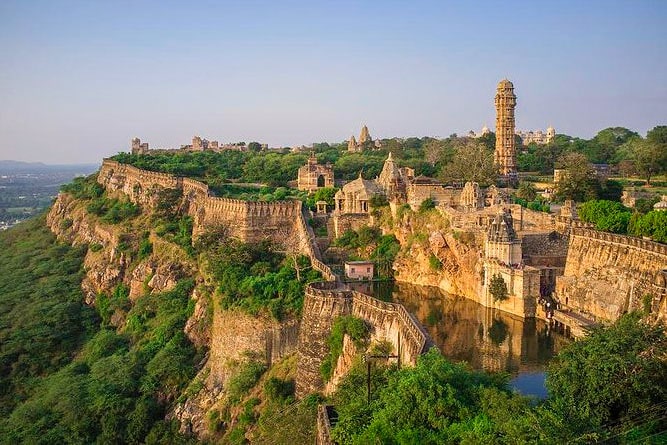
Chittorgarh Fort is located in Chittorgarh, Rajasthan, and is one of the largest forts in India. The fort is built on a hill and is surrounded by a moat. The fort has several palaces, temples, and towers that are worth visiting. The most famous palace is the Rana Kumbha Palace, which is known for its beautiful carvings and paintings. The fort also has several temples, including the Meerabai Temple and the Kumbha Shyam Temple. The fort is also known for its rich history and is said to be the site of several battles during the medieval period.
The Chittorgarh fort is a symbol of Rajput valor and sacrifice. The fort has a rich history and has been the site of several battles between the Rajputs and the Mughals. The fort is also known for its association with the legendary Rajput queen Padmini, who is said to have committed jauhar (mass self-immolation) at the fort to protect her honor. The fort is a must-visit attraction for anyone interested in history and Rajput culture.
Kumbhalgarh Fort

Another popular UNESCO World Heritage Site in Rajasthan is Kumbhalgarh Fort which is known for its impressive fortifications. The fort is built on a hill and is surrounded by a wall that is 36 km long. The wall has seven gates and is said to be the second-longest wall in the world after the Great Wall of China. Inside the fort, you can find several palaces, temples, and gardens that are worth exploring. The fort also has a light and sound show that is held every evening, which gives visitors an insight into the history of the fort.
The Kumbhalgarh fort is a formidable fortification and is considered to be one of the most impregnable forts in Rajasthan. The fort was built in the 15th century by Rana Kumbha and was used as a place of refuge for the rulers of Mewar in times of danger. The fort is also known for its association with the legendary Rajput king Maharana Pratap, who was born at the fort and spent much of his childhood there.
Keoladeo National Park
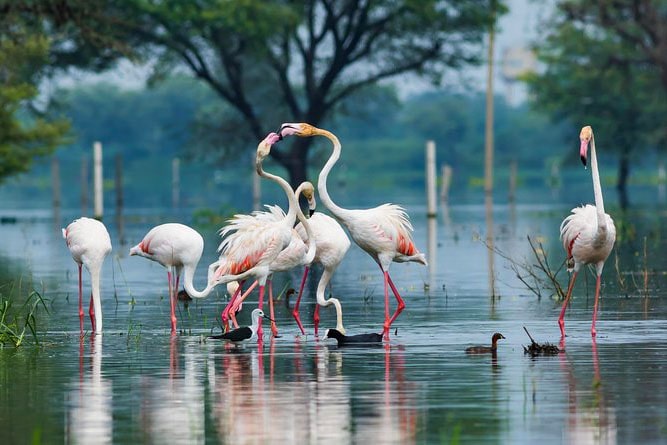
The Keoladeo National Park is located in Bharatpur, Rajasthan, and is a UNESCO World Heritage Site. The park is a wetland and is home to several species of birds, including migratory birds. The park is a popular destination for bird-watching and is also home to several species of mammals and reptiles. Visitors can take a boat ride in the park and can also go on a guided tour to see the different species of birds.
The Keoladeo National Park, also known as the Bharatpur bird sanctuary, is a world-renowned bird-watching destination. The park is a must-see for anyone interested in wildlife and birds.
UNESCO World Heritage Sites in Agra
Taj Mahal
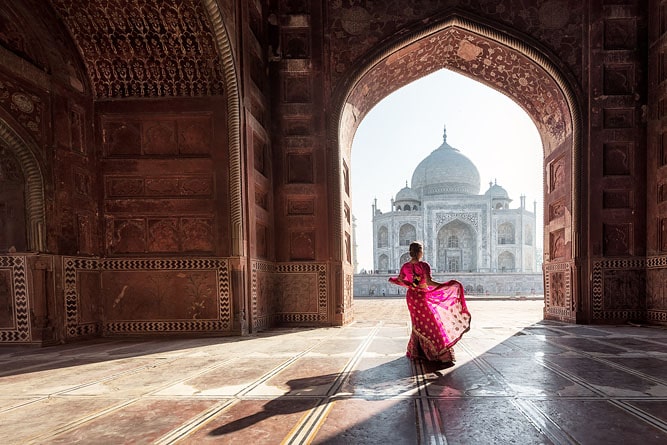
The Taj Mahal is located in Agra, Uttar Pradesh, and is one of the most famous tourist destinations and UNESCO World Heritage Sites in India. The Taj Mahal is a mausoleum built by Mughal Emperor Shah Jahan in memory of his wife Mumtaz Mahal. The monument is made of white marble and is adorned with intricate carvings and inlaid with precious stones. The Taj Mahal is known for its beautiful symmetry and is considered to be one of the finest examples of Mughal architecture. Visitors can take a guided tour of the monument and can also visit the surrounding gardens.
The Taj Mahal is a symbol of love and devotion and is considered to be one of the greatest examples of Mughal architecture. The monument was built in the 17th century and took 22 years to complete. The Taj Mahal is made of white marble and is adorned with intricate carvings and inlaid with precious stones. The symmetry and attention to detail in the construction of the Taj Mahal is truly remarkable. The monument also includes a mosque and is surrounded by beautiful gardens. The Taj Mahal is a must-see for anyone visiting Agra, not only for its architectural beauty but also for its historical and cultural significance.
Fatehpur Sikri
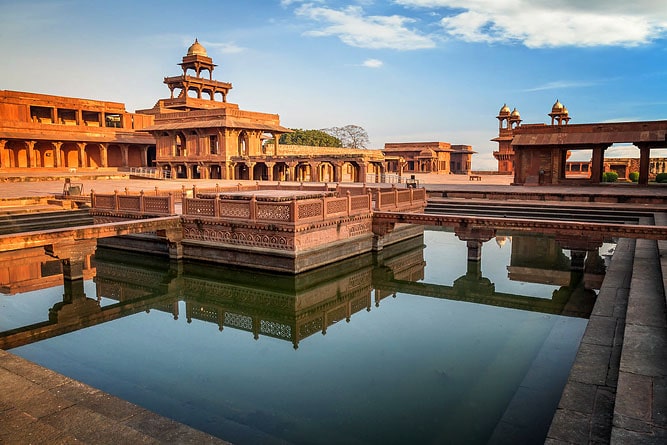
Fatehpur Sikri is a historic city located near Agra and another UNESCO World Heritage Site in Uttar Pradesh. It was built in the 16th century by Mughal Emperor Akbar and was the capital of the Mughal Empire for a short period. Fatehpur Sikri is considered to be one of the most well-preserved examples of Mughal architecture in India. The city has well-preserved palaces, courtyards, and public buildings that give an insight into the life of the Mughal court. The Buland Darwaza, or the "Victory Gate", is one of the most famous monuments in the city and is a perfect example of Mughal architecture. The city also has several other monuments such as the Panch Mahal and the Diwan-i-Khas that are worth visiting. Visitors can take a guided tour of the city and can also visit the nearby Jama Masjid, which is a mosque built by Akbar.
Agra Fort
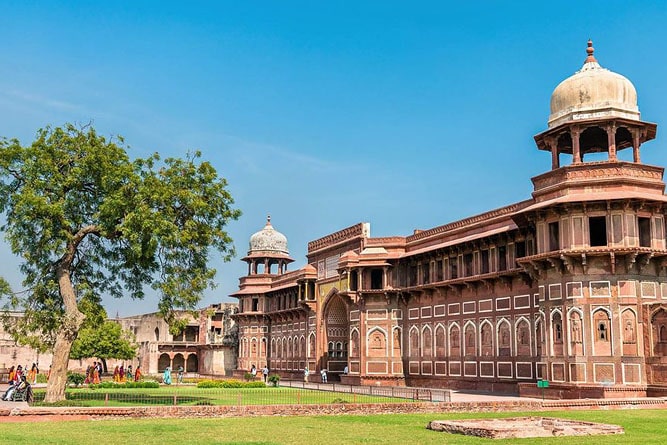
Agra Fort, located in the city of Agra, Uttar Pradesh, is a UNESCO World Heritage Site and a must-see attraction for anyone visiting the city. The fort was built in the 16th century by the Mughal Emperor Akbar and is a perfect example of Mughal architecture. The fort is made of red sandstone and is adorned with intricate carvings, calligraphy and inlaid with precious stones. Inside the fort, visitors can explore the numerous palaces, halls, and gardens that include Jahangir Palace, Khas Mahal, Diwan-i-Aam, and Diwan-i-Khas. The fort also offers a beautiful view of the Taj Mahal which is located just 2.5 km away. With its rich history and architectural beauty, Agra Fort is a true representation of the Mughal Empire's grandeur.
UNESCO World Heritage Sites in Delhi
Qutb Minar
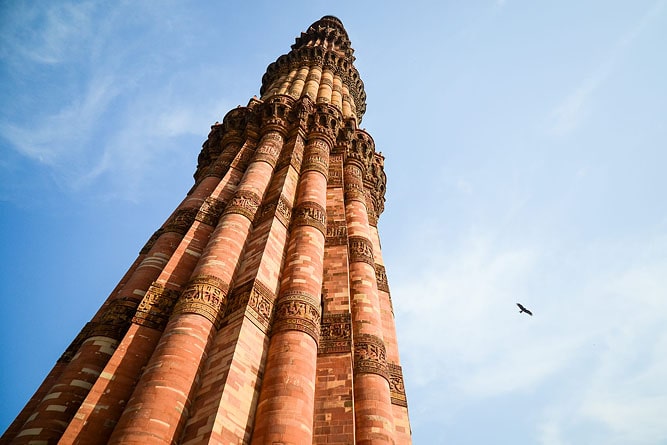
Qutb Minar is a 73-meter-tall tower located in Delhi, India. The tower was built in the 12th century and is a UNESCO World Heritage Site. The tower is made of red sandstone and is adorned with intricate carvings and calligraphy. The tower is also surrounded by several other monuments, including the Quwwat-ul-Islam Mosque, which is the first mosque built in India, and the Alai Darwaza, which is a beautiful gateway built by Alauddin Khilji.
The Qutb Minar is an architectural marvel and a symbol of Islamic power in India. The tower was built by Qutb-ud-din Aibak, the first Muslim ruler of Delhi, to commemorate his victory over the Rajputs. It is considered to be one of the finest examples of Islamic architecture in India. The Qutb Minar is a must-see for anyone interested in history and architecture, and offers a glimpse into the rich cultural heritage of Islamic India.
Humayun's Tomb
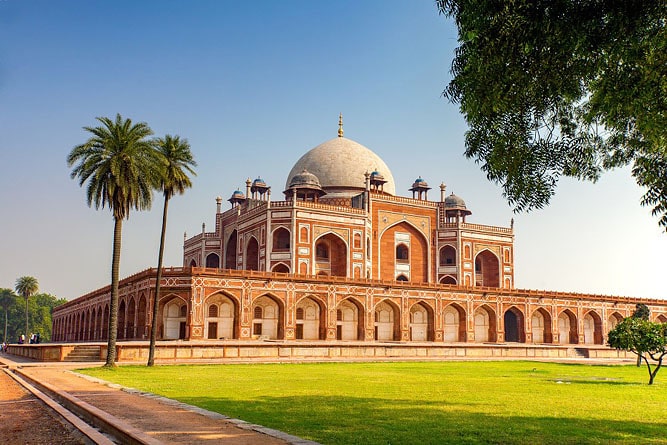
Humayun's Tomb, located in Delhi, is another UNESCO World Heritage Site that is a must-visit for any traveler interested in Mughal history and architecture. The mausoleum was built in the 16th century by Mughal Emperor Humayun's wife Haji Begum. The tomb is considered to be the first example of Mughal architecture in India and is known for its beautiful symmetry and intricate carvings. Visitors can take a guided tour of the tomb and can also visit the nearby Nizamuddin Dargah, which is a shrine dedicated to the Sufi saint Nizamuddin Auliya.
Humayun's tomb is considered as an important example of Mughal architecture in India and it has great historical significance. The tomb is the first of its kind in India and it was built by Haji Begum, the widow of Emperor Humayun. The tomb is also surrounded by beautiful gardens and several other tombs of Mughal nobles.
Red Fort Complex
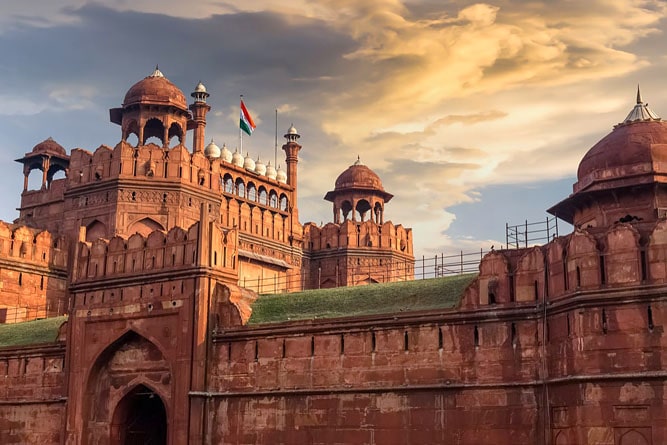
The Red Fort Complex is located in the heart of Delhi, India. The complex was built in the 17th century by Mughal Emperor Shah Jahan and is made of red sandstone. The complex includes several palaces, such as the Diwan-i-Khas, the Rang Mahal, and the Moti Masjid, as well as a beautiful garden called the Hayat Bakhsh Bagh. Visitors can take a guided tour of the complex and can also see the daily sound and light show that is held in the evening.
The Red Fort Complex is a symbol of Mughal power and grandeur and is considered to be one of the finest examples of Mughal architecture in India. The complex was the center of Mughal political and cultural life. The complex also includes the famous Lahori Gate, through which the Indian national flag is hoisted on Independence Day.
Conclusion
Rajasthan, Delhi, and Agra are home to several UNESCO World Heritage Sites that are not only popular tourist destinations but also hold immense cultural and historical significance. From the Jantar Mantar and Amber Fort in Rajasthan to the Taj Mahal in Agra and Red Fort Complex in Delhi, these sites are a must-see for anyone interested in history and architecture. These sites offer a glimpse into the rich culture and heritage of India and are a testament to the country's rich past. These monuments are not just architectural masterpieces, but they also tell the stories of the people who built them, their culture and their way of life. Each site has its own unique story and significance, and visiting them can be a truly enriching experience. So, if you are planning to visit Rajasthan, make sure to include these UNESCO World Heritage Sites in your itinerary for a glimpse into the India's rich history and culture.
